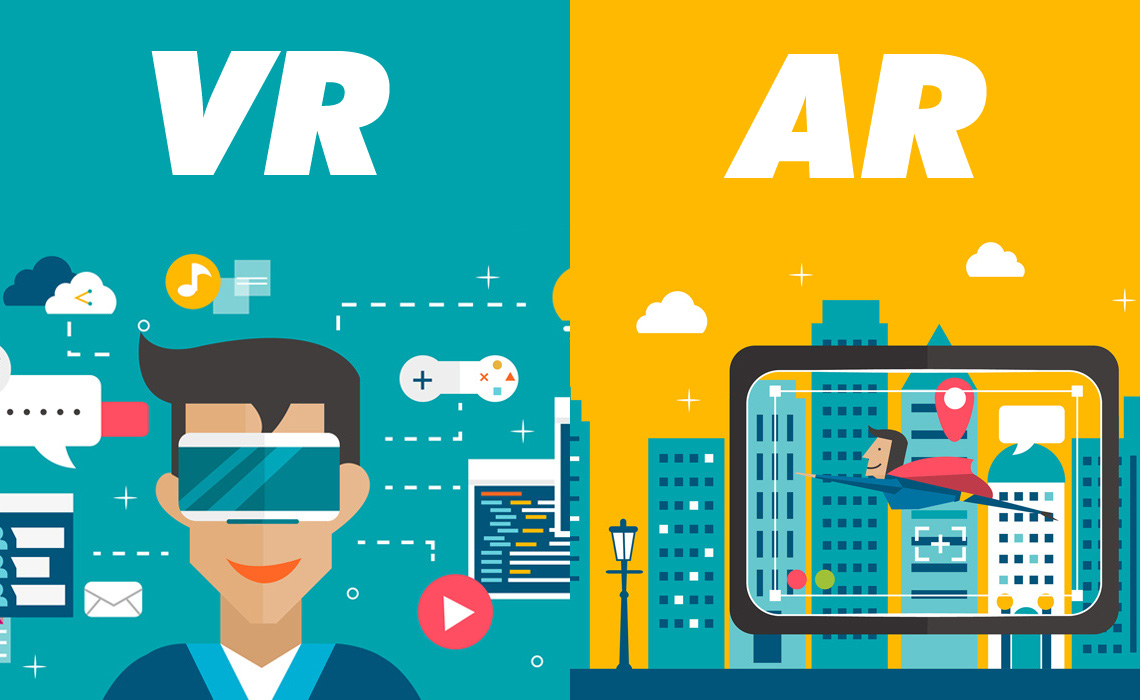Thanks to the efforts of tech companies like Google, Augmented reality, or AR, technology is advancing at an incredibly rapid pace, and new upgrades to AR technology could reshape web design in 2020 and beyond.
Though we’re just now realizing the implications of this technology, it’s actually been around for a while. However, the beginning of AR was really in 2018 – at least that’s when the public embraced it and saw it as something they could use in their daily lives. In earlier attempts, AR came off as nothing more than cute gimmickry for entertainment purposes. Recent upgrades to the Google ARCore system as well as growing public interest position 2020 as a potentially pivotal year in the progression of AR technology.
AR in Recent Years
AR can offer some surprising and useful functions, but it has yet to reach its full potential due to the current limitations of the technology. Despite some issues with realism, real-world physics interpretation, and occlusion – hiding virtual objects behind real things – many AR applications have seen mainstream success. One of the most prominent examples of AR in the mainstream is the mobile game Pokémon Go.
Pokémon Go players use their mobile devices’ cameras to capture Pokémon who appear in the real world as superimposed digital images. Currently, the game only allows for Pokémon to appear in a somewhat limited fashion; they will appear on screen regardless of the depth and positions of real-world objects seen through the mobile device’s viewfinder. However, a 2018 demo from Niantic, the developers of Pokémon Go, showed the company is working hard on bringing occlusion technology to the game.
Another prominent example of mainstream AR success is Snapchat, a social media network designed around photos sent to users, but only for a few seconds. Users now have the option to not only send photos without time limits but also the ability to edit their photos and videos easily with a host of in-app editing functions. Snapchat filters are arguably the most popular new AR technologies added to the Snapchat platform, allowing users to add animal faces to their own, enhance their photos with digital backdrops and special effects, and even themed AR displays released alongside major Hollywood movie releases, like the Avengers films. Currently, Snapchat is the most popular AR-enabled application in use today.
These advances and growing public acceptance of AR technology has encouraged developers like Google to focus more heavily on AR technology, and mobile and web application developers should take notice. This exciting technology holds incredible promise for a countless variety of applications, from shopping and entertainment to product development and immersive communication.
New AR Functionalities on the Horizon
AR provides more immersive user experiences, and this technology is far more accessible currently than virtual reality because it does not require additional expensive hardware such as a VR headset, controllers, and other peripherals. A vast audience could potentially access AR technology with relative ease using nothing more than a smartphone.
Web application developers and mobile app developers should start considering the various ways AR will reshape user experience and web development in 2020 and beyond:
-
360-Degree Immersion
Modern smartphones feature advanced cameras that rival the capabilities of many commercially available digital cameras, all with the added convenience of being packed inside the user’s phone. Virtually anyone can take stunning photos using a smartphone, and AR technology can take full advantage of this and provide 360-degree immersive content. As the user holds a smartphone and looks through the viewfinder, new AR technology allows developers to create 360-degree experiences.
This technology has already appeared in games like Pokémon Go, and many AR filters available on services like Snapchat allow users to superimpose digital images on what they see all around them. As tech developers like Google refine the technology behind AR, more developers will have the ability to create even more uniquely engaging experiences.
-
Contextual Computing
One of the current challenges of AR development is programming digital imagery to respond to real-world objects and environments in realistic ways. Contextual computing will allow AR applications to more accurately interpret what a device’s viewfinder captures and respond more appropriately. Contextual computing will also allow developers to harvest more useful data based on how and when AR applications are used.
AR applications could also be used as background data-gathering tools. As a user enjoys an AR application, the application automatically tracks environmental data for all kinds of purposes. This is more potential for web developers to create more finely tuned experiences backed by data-driven insights.
-
Voice Command Functionality
More users than ever are taking advantage of voice activation technology and using voice commands for their devices, both on web-based applications and through their mobile devices. In time, users will be able to interact with AR displays using their voices. For example, a virtual touring application could potentially allow communication with people seen through the AR display. A game like Pokémon Go could potentially allow players to talk to their Pokémon in real time and enjoy their digital responses. The possibilities are truly endless when it comes to the marriage of AR technology with voice recognition.
-
Combination Technology of VR and AR
Virtual reality remains somewhat inaccessible to many users due to the high price of entry required for quality experiences. However, AR and VR technology could potentially blend to create highly memorable user experiences. As AR and VR technology grow more refined and more accessible, the lines dividing these technologies will start to blur. AR experiences will become increasingly realistic and more immersive, and VR technology will eventually become more easily accessible for a greater number of users.
-
Increased Availability of Development Tools
More and more web developers are turning toward AR as the future of web development. Google has yet to release its recent DepthAPI upgrade commercially, but a large network of partnered developers is working closely with the tech giant to create more immersive experiences. In time, these development tools will be more widely accessible. As more developers get their hands on more advanced AR programming tools, we will start seeing more sophisticated and creative applications that use AR in exciting new ways.
-
Increased Realism With Occlusion Technology
Occlusion is the visual effect of a digital image responding to real-world objects in realistic ways. In the 2018 Pokémon Go occlusion demo, viewers watched a digital Pikachu scamper between real-world displays at a live scene as if it were actually inside the scene. This technology requires further refinement, but the recent changes to the Google ARCore system indicate that occlusion is closer to reality than you might expect. Occlusion technology for AR hinges on real-world physics analysis and depth perception, and the best part about this emerging technology is that it builds on existing software; users won’t need to upgrade their devices to access AR applications with occlusion technology.
AR continues to grow in exciting ways, and more application developers are starting to think of ways to provide users with more immersive, more entertaining, and ultimately more valuable experiences using advanced AR technology. As 2020 approaches, start thinking of the ways you could integrate AR technology into your goals for user experience. Get creative and start planning ways to leverage this new technology in your web development efforts in the future.













No Comments
Leave a comment Cancel